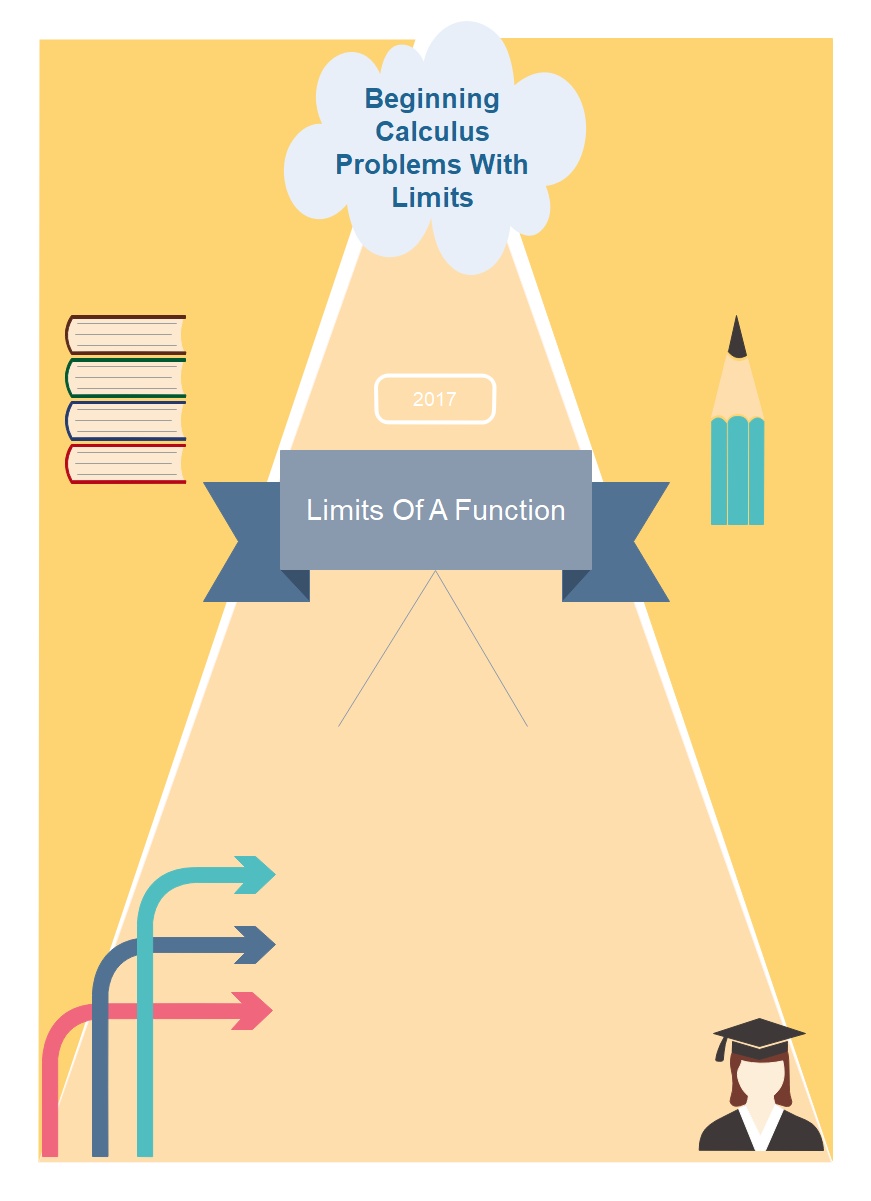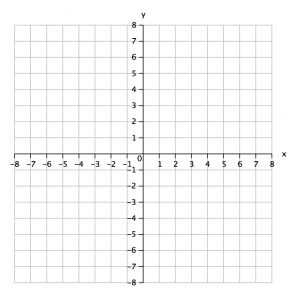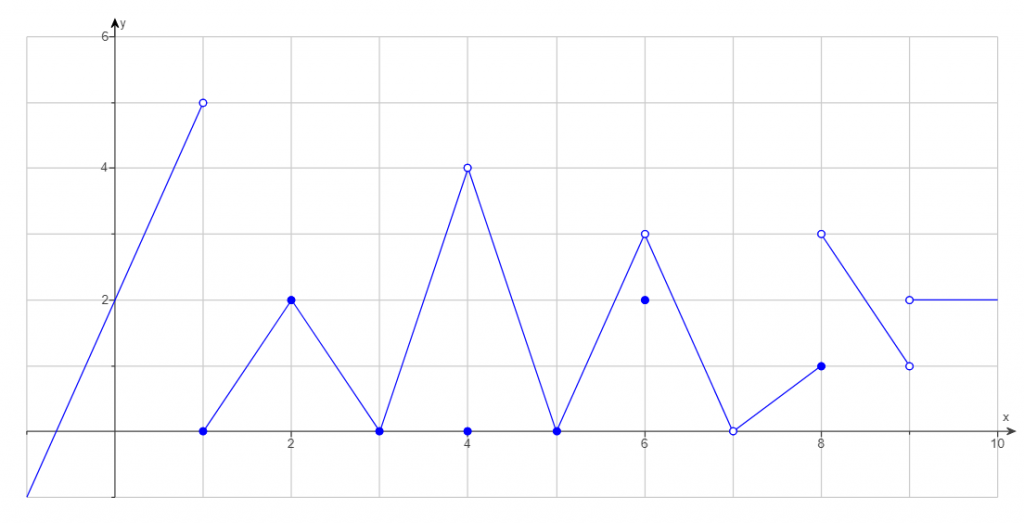
Beginning Calculus Problems With Limits
Beginning calculus problems with limits of a function are a common teaching technique for young students that are just starting their journey in Calculus. Limits problems will help you understand how they work and what is going on when you encounter a function. Repetition is key here to get your brain used to thinking about what a function or a graph means. I include several examples below in order for you to practice and grasp the concepts.
Beginning Calculus Problems With Limits
Limits of a function have been around in concept for a very long time. Mathematicians first started using the Limit concept somewhere around 400 years ago but our modern form of a Limit has only been used since the early 1800's or so. They are the foundation to learning derivatives and are subsequently used in modern Calculus quite often.
What Is A Limit?
If you have an x-y graph like this:

Lets say you are starting at 0,0 on this graph. That means that your X value =0 and your Y value =0. If you then move to some value to your right like X=4 then your X value =4. What does your Y value equal? Well that depends on whether you traveled in a straight line or some type of diagonal path up. Why does that matter?
Well, the Limit = the Y value!
So if you drew a crazy line that just went to X=4 but your Y value =7 then your Limit at X=4 =7. Does that make more sense now?
Wherever you end up on the X plane you will have some Y value as well. If you are still on Y =0 then your Limit =0.
So now that you should hopefully understand what the Limit is lets look at some problems.
Problem 1 - For the graph of f(x) below, find the limit

What is:
\[ \tag{1}\lim_{x \to 3} f(x) \]
When you look at this graph think about what you see. You see the X-axis marked off and the Y-axis is too. Now what is the question asking? It is asking what is the limit of f(x) as X approaches 3. What is the limit then? The limit is the value that the Y-axis is when X is at or very near 3. When you look at the graph again you will see that Y = 0 so the limit is 0.
\[ \tag{2}\bbox[red,2pt]{\lim_{x \to 3} f(x) = 0}\]
Problem 2 - For the graph of f(x) below, find the limit

What is \( \tag{1}\lim_{x \to 9} f(x) \) :
This is the same graph as above and looking at it we can see our X and Y values clearly marked. Our question is asking what is the limit of f(x) as X approaches 9. Now we look at X=9 on the graph and then see what Y values are there. Do you see the issue yet? Yes there are two values for Y at X=9. These are one sided limits which we will get into another time but the thing to take away here is those two Y values are not equal. This means the limit in our problem does not exist.
\[ \tag{2}\bbox[red,2pt]{\lim_{x \to 9} f(x) = }\] Does Not Exist!
Problem 3 - Find The Following limit
What is the \( \tag{1}\lim_{x \to -2} ( -x^2 + 9x -1 ) \)
This is a limit problem that does not have a graph to look at but instead uses an equation. This equation is a simple polynomial. What can you do here? Well in math it is a good idea to try the simplest idea first to rule it out unless you have some reason not to. Lets try substitution here since that is barely algebra and it looks like it could work and give us a value. What we will want to do is substitute X=-2 into our equation. Why X=-2? That is because it is the point at which X is approaching.
\( \tag{2} ( -(-2)^2 + 9(-2) -1 ) \)
You should notice now that everywhere there was an (X) value in the equation I put in a (-2).
\(\tag{3}(-4 -18 -1)\)
Multiply the values together and remember to keep the signs right.
\(\tag{3}\bbox[red,2pt] {-23}\)
Problem 4 - Find The Following limit
Find \(\tag{1}\lim_{y \to -11}(16-y)^4/3\)
Here we have another substitution problem where our variable is Y. It is a little different because our equation has an exponent. So lets take it step by step.
\(\tag{2}\lim_{y \to -11}(16 - (-11))^4/3 \)
Now we have substituted -11 for our Y variable. Then we simplify this a bit.
\(\tag{3}\lim_{y \to -11}(16 + 11)^4/3 \)
\(\tag{4}\lim_{y \to -11}(27)^4/3 \)
When dealing with an unusual exponent like this you can remember this little trick. Take your base number to the 4th power and then take the 3rd root of it. The 3rd root is also called the cube root. This is all the same as taking 27 to the \(4/3\) power.
Our little problem now becomes much easier and the solution is \(\tag{5}\bbox[red,2pt]{\lim_{y \to -11}(16 - y)^4/3 = 81}\)
Problem 5 - Find The Following limit
Find \(\tag{1}\lim_{h \to 0}(\frac{6}{\sqrt{6h + 4} +4})\)
This is a nice problem because it combines a few different styles and techniques to finish. This one is still quick to finish but it will be the start of harder problems that look like this one.
We have a limit, a fraction, and and a square root to deal with so this will be fun while it lasts.
Now for this and any other problem involving a fraction, we can substitute as long as the bottom part of the fraction does not equal 0. We should be safe here by the looks of it so lets try that.
\(\tag{2}\lim_{h \to 0}(\frac{6}{\sqrt{6(0) + 4} + 4}) \)
Simplifying this now makes it easier to see what is happening.
\(\tag{3}\lim_{h \to 0}(\frac{6}{\sqrt{4} + 4}) \)
We still are not doing anything with the top but we are almost there. Lets finish with the bottom now.
\(\tag{4}\lim_{h \to 0}(\frac{6}{2 + 4}) \)
\(\tag{5}\lim_{h \to 0}(\frac{6}{6}) \)
Well this is shaping up nicely.
\(\tag{6}\bbox[red,2pt]{\lim_{h \to 0} = 1} \)
Problem 6 - Find The Following limit
Find \(\tag{1}\lim_{h \to 0}(\frac{\sqrt{19h + 1 } -1 }{h}) \)
Ok different looking problem here. You can see we have the [h] on the bottom now. Since this is a fraction and we already know you can never divide by 0, we now know you must do something entirely different to solve this problem. Your main clue is that there is a square root on the top. Remember that square roots multiplied by themselves gives the value inside the root and the root disappears. However, what you do to the top will also have to be done on the bottom. This is called the conjugate method and it is used to solves problems like this.
\(\tag{2}\lim_{h \to 0}(\frac{\sqrt{19h + 1} -1 }{h}) * (\frac{\sqrt{19h + 1} + 1}{\sqrt{19h + 1} +1}) \)
Now we are just multiplying the left side by the right side. Watch your signs carefully here. Always good to keep everything spaced apart a lot so that you can see what your doing and avoid making mistakes.
\(\tag{3}\lim_{h \to 0} (\frac{19h + 1 -1}{{h}{\sqrt{19h+1}+1}})\)
Now that we have multiplied both sides together we can subsequently start simplifying the top and bottom of our equation.
\(\tag{4}\lim_{h \to 0}(\frac{19h}{{h}{\sqrt{19h+1}+1}})\)
Since we have an [h] on top and bottom being multiplied by another expression we can cancel those [h] out.
\(\tag{5}\lim_{h \to 0} (\frac{19}{\sqrt{19h+1}+1})\)
Substitute 0 for h on the bottom part of the equation.
\(\tag{5}\lim_{h \to 0}(\frac{19}{0+1+1})\)
We are basically done so lets just make it look nice and final. The answer is:
\(\tag{6}\bbox[red,2pt]{\lim_{h \to 0}=(\frac{19}{2})}\)
Problem 7 - Find The Following limit
Find \(\tag{1}\lim_{x \to 3}(\frac{x-3}{x^2-9}) \)
Here is another type of problem involving a limit however it just uses algebra to solve. You should be able to recognize instantly that the top and bottom parts of the equation are related to each. So break the problem up into parts and simplify from there.
\(\tag{2}\lim_{x \to 3}(\frac{x-3}{(x+3)(x-3)})\)
Since you will have an x-3 on both the top and the bottom you can just cancel them out in this situation. That will leave you:
\(\tag{3}\lim_{x \to 3}(\frac{1}{x+3})\)
Now you just apply the limit and you will have your answer.
\(\tag{4}\lim_{x \to 3}(\frac{1}{3+3})\)
This will give us a nice fraction as the answer.
\(\tag{5}\bbox[red,2pt]{\lim_{x \to 3}=(\frac{1}{6})}\)
Problem 8 - Find The Following limit
Find \(\tag{1}\lim_{x \to 4} (\frac{x^2-2x-8}{x-4})\)
Here is another problem that is a fraction and it looks different than the one before you will notice. Actually, they should all look slightly different than the one before because there can be many variations. This is yet another variation with a polynomial. These problems are arranged this way to teach you the steps in troubleshooting a calculus problem and to help you recognize common forms of problems and what to do with them. If you are new to calculus just keep practicing until you instantly see what to do. Now here we go!
If you look at this problem it might seem weird but it is just a factoring calculus problem. You will obviously need to factor the top and hopefully that is clear to you. However, what beginners might not recognize is that the problem is already half factored for you. At this level of calculus problems are not going to be given to you that do not factor easily.
So, with that in mind, remember how the previous problems were dealt with? Yeah we factored and then cancelled out a top and bottom factor. We will do the same here. The bottom part of the fraction is one of the factors of the top part of the fraction.
\(\tag{2}\lim_{x \to 4}(\frac{(x+2) (x-4)}{x-4})\)
So see my point there how that works? We now have x-4 on both the top and bottom so we can just cancel them out.
\(\tag{3}\lim_{x \to 4}(x+2)\)
Now we just apply the limit.
\(\tag{4}\lim_{x \to 4}(4+2)\)
We now have a solution.
\(\tag{5}\bbox[red,2pt]{\lim_{x \to 4}=(6)}\)
Problem 9 - Find The Following limit
Find the limit of \(\tag{1}\lim_{u \to 1}(\frac{u^3-1}{u^4-1})\)
There is a lot of factoring to do in this problem and you should be familiar with how to deal with numbers to the 3rd and 4th power. It is not hard at all though and furthermore it is good practice for harder problems later on. First, factor top and bottom and then see what we can do after that.
\(\tag{2}\lim_{u \to 1}(\frac{(u^2+ 1u +1)(u-1)}{(u^2+1)(u+1)(u-1)})\)
There we have both the top and the bottom parts of the fraction factored. Lets see what we can do with it now. We can cancel expressions on both top and bottom subsequently really make this simpler.
\(\tag{3}\lim_{u \to 1}(\frac{u^2 + 1u + 1}{(u^2 + 1)(u + 1) })\)
We are almost there now and we just need to substitute to apply the limit.
\(\tag{4}\lim_{u \to 1}(\frac{1^2 + 1(1) +1 }{(1^2 +1)(1 + 1)})\)
Now just do the simple math and we will have our answer.
\(\tag{5}\bbox[red,2pt]{\lim_{u \to 1} = 3/4 }\)
Problem 10 - Find The Following limit
Find \(\tag{1}\lim_{x \to -6} (\frac{5-\sqrt {x^2 - 11}}{x+6})\)
Here is another nice problem but with a twist because now the square root is on the top. From looking at the top we can treat this as another conjugate problem. So lets multiple the top and bottom by the conjugate of the top.
\(\tag{2}\lim_{x \to -6} (\frac{5-\sqrt{x^2 - 11}}{x + 6}) * (\frac{5 + \sqrt{x^2 - 11}} {5 + \sqrt{x^2 - 11}}) \)
That is an ugly equation and set up so let us try to make it look a little nicer. Just multiple top and bottom and remember to keep the sings straight.
\(\tag{3}\lim_{x \to -6} (\frac{25 - (x^2 - 11)}{(x + 6)(5 + \sqrt{x^2 - 11})})\)
While this still looks messy and difficult to work with it is getting better. Keep simplifying things out step by step so you do not miss any signs or do something silly.
\(\tag{4}\lim_{x \to -6} (\frac{ -x^2 + 36}{(x + 6)(5 + \sqrt{x^2 - 11})})\)
Rearrange the top so that it makes more sense as to what your supposed to.
\(\tag{5}\lim_{x \to -6} (\frac{36 - x^2}{(x + 6)(5 + \sqrt{x^2 - 11})})\)
Now factor what you can and this problem start to make sense.
\(\tag{6}\lim_{x \to -6} (\frac{(6 + x)(6 - x)}{(x + 6)(5 + \sqrt{x^2 - 11})})\)
Now cancel the similar terms and lets see what is left.
\(\tag{7}\lim_{x \to -6}(\frac{6-x}{5 + \sqrt{x^2 - 11}})\)
Substitute and apply the limit now. We get a good integer answer.
\(\tag{8}\bbox[red,2pt]{\lim_{x \to -6} = (\frac{6}{5})}\)
Problem 11 - Find The Following limit
Find the limit of \(\tag{1}\lim_{x \to 0}(\csc(x))\)
Now things are getting interesting because we now have limits of trig functions. Hopefully you remember your pre-calculus! These are simple though as you just rewrite the harder forms into something that you do recognize.
\(\tag{2}\lim_{x \to 0}(\frac{1}{\sin(x)} )\)
We know that \((\sin (0) = 0) \) but if you graph it or do a table of values you will see that values go wildly out of control as they get close to 0. That is our clue there.
\(\tag{3}\bbox[red,2pt]{\lim_{x \to 0} (\csc(x) = \infty)} \)
Problem 12 - Find The Following limit
Find the limit of \(\tag{1}\lim_{h \to 0} (\frac{f(x + h) + f(x)}{h} )\) when \(f(x) = x^2\) and \(x = 7\).
\(\tag{2}\lim_{h \to 0} (\frac {(x + h)^2 -x^2}{h})\)
We just substituted in our functions and the value of x.
\(\tag{3}\lim_{h \to 0} (\frac{(7 + h)^2 - 7^2}{h})\)
We just plugged things in but it does take some attention to detail to keep things straight. We now have:
\(\tag{4}\lim_{h \to 0} (\frac{49 + 14h - 49}{h} ) \)
Just factor everything and watch expressions disappear again.
\(\tag{5}\lim_{h \to 0}(\frac{h(14 + h)}{h})\)
Factor out the \(h\) now so that we no longer have a fraction to deal with.
\(\tag{6}\lim_{h \to 0}(14 + h)\)
Now you just evaluate the expression and you get the answer.
\(\tag{7}\lim_{h \to 0}(14 + 0)\)
So our answer is :
\(\tag{8}\bbox[red,2pt]{\lim_{h \to 0} = (14)} \)
Conclusion
That will conclude our lesson about beginning calculus problems with limits. I hope this was all clear and well explained especially with all of the Latex markup I tried to write. These limits are important because they will help in your understanding of derivatives soon and furthermore make you better at spotting derivative problems. When we see a problem to solve there is not always a guide to tell you what kind of problem you are looking at so it is important to grasp these fundamentals well.